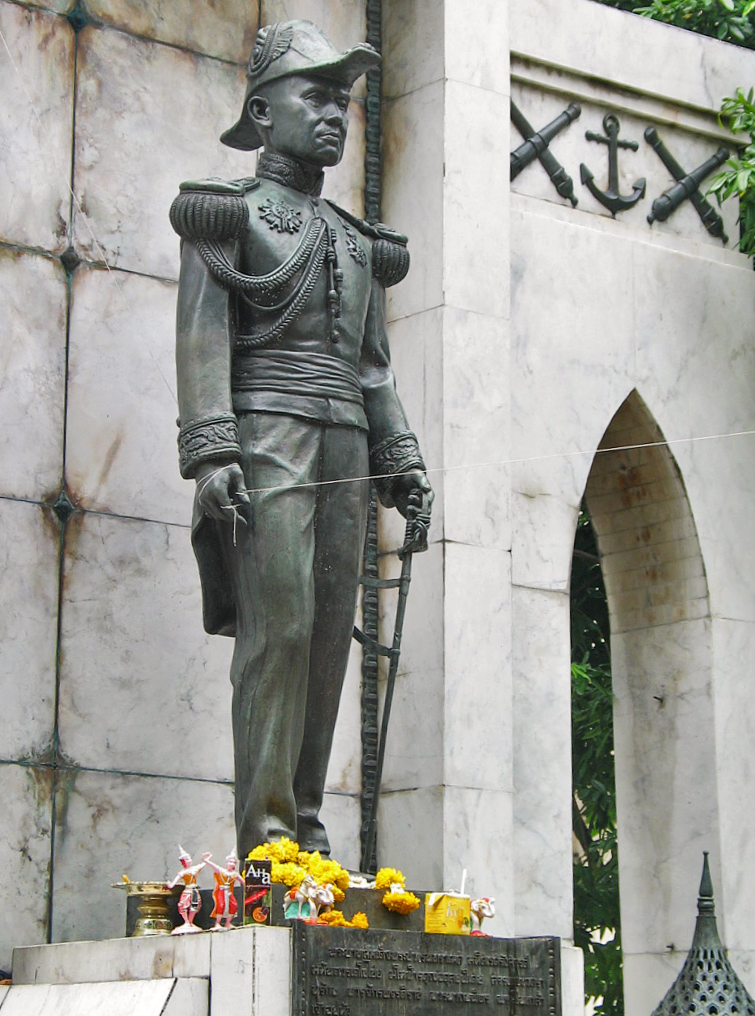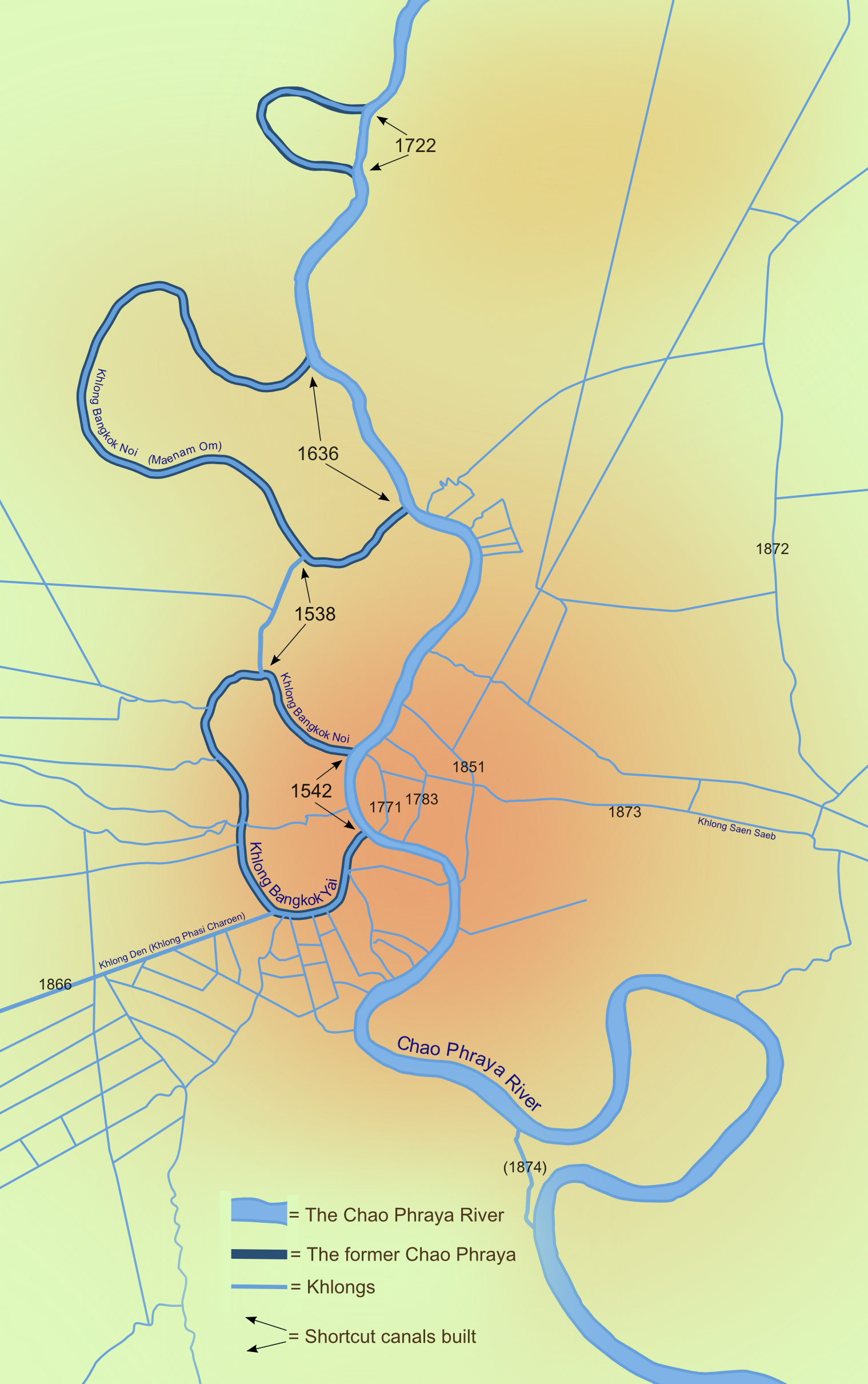|
Tha Chang, Bangkok
250px, The old Neoclassical shophouses lined up on the front of Tha Chang Pier Tha Chang ( th, ท่าช้าง, ), or well known in Thai Tha Chang Wang Luang (, ), with designated pier code N9, is a pier on Chao Phraya River located on the end of Na Phra Lan Road in the area behind Grand Palace next to Nagaraphirom Park and Ratchaworadit Pier. Description Its name meaning ''"Elephant Pier"'' (''Tha'' is jetty, pier and ''Chang'' is elephant), it was built in the reign of King Phutthayotfa Chulalok (Rama I), who was the first monarch of Chakri Dynasty and the founder of Rattanakosin Kingdom. At that time, elephants from the Grand Palace were brought to this area to take a bath, therefore making it called "Tha Chang" in Thai. It was also known by another name in those days as ''"Tha Phra"'' ( th, ท่าพระ, , "Pier for Buddha") because it was the point where a large Buddha image named Phra Sri Sakyamuni was brought from a raft to be enshrined in the inner city ( ... [...More Info...] [...Related Items...] OR: [Wikipedia] [Google] [Baidu] |
Chulalongkorn
Chulalongkorn ( th, จุฬาลงกรณ์, 20 September 1853 – 23 October 1910) was the fifth monarch of Siam under the House of Chakri, titled Rama V. He was known to the Siamese of his time as ''Phra Phuttha Chao Luang'' (พระพุทธเจ้าหลวง, the Royal Buddha). Chulalongkorn's reign was characterised by the modernisation of Siam, governmental and social reforms, and territorial concessions to the British and French. As Siam was surrounded by European colonies, Chulalongkorn, through his policies and acts, ensured the independence of Siam. All his reforms were dedicated to ensuring Siam's independence given the increasing encroachment of Western powers, so that Chulalongkorn earned the epithet ''Phra Piya Maharat'' (พระปิยมหาราช, the Great Beloved King). Early life King Chulalongkorn was born on 20 September 1853 to King Mongkut and Queen Debsirindra and given the name Chulalongkorn. In 1861, he was designated ' ... [...More Info...] [...Related Items...] OR: [Wikipedia] [Google] [Baidu] |
Silpa Wattanatham
''Silpa Wattanatham'' ( th, ศิลปวัฒนธรรม, ), known in English as ''Art & Culture'', is a Thai history magazine and a publishing imprint of Matichon Group. Founded by Sujit Wongthes Sujit Wongthes (or Wongthet) (b. 1945) is a Thai journalist, historian, and author. Biography Wongthes attended Silpakorn University, graduating from the archaeology program there. During his time at university, he wrote for the student journal ... in 1979, the magazine popularized Thai history and opened up the field, which had previously been restricted to academic circles, to mass consumption. Writers associated with the magazine, the most prominent of which include Sujit, Srisakara Vallibhotama and Dhida Saraya, mainly argued against the established narrative of Thai history which focused on Tai immigration from southern China and instead stressed the diversity of Thailand's cultural origins. References External links * 1979 establishments in Thailand History mag ... [...More Info...] [...Related Items...] OR: [Wikipedia] [Google] [Baidu] |
World War II In Thailand
Thailand officially adopted a neutral position during World War II until the five hour-long Japanese invasion of Thailand on 8 December 1941, which led to an armistice and military alliance treaty between Thailand and the Japanese Empire in mid-December 1941. At the start of the Pacific War, the Japanese Empire pressured the Thai government to allow the passage of Japanese troops to invade British-held Malaya and Burma. After the invasion, Thailand capitulated. The Thai government under Plaek Phibunsongkhram (known simply as Phibun) considered it profitable to co-operate with the Japanese war efforts, since Thailand saw Japan – who promised to help Thailand regain some of the Indochinese territories (in today's Laos, Cambodia, and Vietnam) which had been lost to France – as an ally against Western imperialism. Following added pressure from the start of the Allied bombings of Bangkok due to the Japanese occupation, Axis-aligned Thailand declared war on the United Kingdom an ... [...More Info...] [...Related Items...] OR: [Wikipedia] [Google] [Baidu] |
Pridi Banomyong
Pridi Banomyong ( th, ปรีดี พนมยงค์, , ; 11 May 1900 – 2 May 1983), also known by his noble title Luang Praditmanutham ( th, หลวงประดิษฐ์มนูธรรม) was a Thai politician and professor. As a Thai Regent, prime minister and senior statesman of Thailand, he also held multiple ministerial posts. He was a leader of the civilian wing of Khana Ratsadon, founder of University of Moral and Political Sciences and the Bank of Thailand. Born to a family of farmers in Ayutthaya Province, he nonetheless received a good education, becoming one of the nation's youngest barristers in 1919, at the age of nineteen. In 1920, he won scholarship to study in France, where he graduated from University of Caen with a master's degree, and completed his doctorate from University of Paris in 1927. In the same year, he co-founded Khana Ratsadon with like-minded Siamese overseas students. After returning to Thailand, still called Siam at the ti ... [...More Info...] [...Related Items...] OR: [Wikipedia] [Google] [Baidu] |
Royal Society Of Thailand
The Royal Society ( th, ราชบัณฑิตยสภา, , ) is the national academy of Thailand in charge of academic works of the government. The secretariat of the society is the Office of the Royal Society ( th, สำนักงานราชบัณฑิตยสภา, ), formerly known as the Royal Institute ( th, ราชบัณฑิตยสถาน, ). The office is an independent agency under the prime minister's supervision. The Royal Society was established on 19 April 1926 and was dissolved on 31 March 1934. The dissolved society was split into the Royal Institute and the Fine Arts Department. On 14 February 2015, the Royal Institute was reorganised. Its administrative council became the Royal Society, whilst the institute itself became the office of the society. According to the present structure, the members of the Royal Society are of three types: associate fellows, fellows, and honorary fellows. The associate fellows are experts selected and ... [...More Info...] [...Related Items...] OR: [Wikipedia] [Google] [Baidu] |
Phra Athit Road
Phra Athit Road ( th, ถนนพระอาทิตย์, , ; lit: ''"Sun Road"'') is located along Chao Phraya River to the northeast. Back in the past this road was full with important buildings such as houses of nobility and mansions as residence of ambassadors from other countries. Now there are Office of the Council of State, Buddhist Association of Thailand, Food Agriculture Organization (FAO), UNICEF of Thailand located on this road. It is surrounded by river piers, and a riverside park with the ancient for called Phra Arthit Fort or Phra Sumen Fort. At night this road is popular for many restaurants and bars with live music such as pop, rock, and Jazz for tourists and local people. Phra Arthit Road has a history of more than 200 years old since the establishment of Bangkok in King Rama I Era. Still, the road was actually built in the reign of King Rama V. It has been the center of government, art, and culture of Thai people. It is lined along Chao Phraya River starting ... [...More Info...] [...Related Items...] OR: [Wikipedia] [Google] [Baidu] |
Phra Pin Klao Bridge
The Somdet Phra Pinklao Bridge ( th, สะพานสมเด็จพระปิ่นเกล้า, , ) is a bridge near the Grand Palace over the Chao Phraya River in Bangkok, Thailand. It links Rattanakosin Island with Thonburi. Background The bridge is named after Pinklao, vice-king of Siam, 1851–1866. In the project phase, the bridge was referred to as the Tha Chang Wang Na Bridge ( Thai: สะพานท่าช้างวังหน้า). In June 1973, it was renamed the Somdej Phra Pinklao Bridge in honour of Prince Pinklao.Special supplement of the Bangkok Post/World newspaper - September 24, 1973 The Chalerm Sawan 58 Bridge ( Thai: สะพานเฉลิมสวรรค์ ๕๘) along two pedestrian bridges crossing the northern part of Khlong Khu Mueang Doem ( Thai: คลองคูเมืองเดิม) had to be dismantled to make way for the new bridge and its access road. Construction of the bridge started on 4 Aug ... [...More Info...] [...Related Items...] OR: [Wikipedia] [Google] [Baidu] |
Pinklao
Pinklao ( th, ปิ่นเกล้า) (September 4, 1808 – January 7, 1866) was the viceroy of Siam. He was the younger brother of Mongkut, King Rama IV, who crowned him as a monarch with equal honor to himself. Early life Prince Chutamani was born on September 4, 1808, as a son of Prince Isarasundhorn and Princess Bunrod at the Phra Racha Wang Derm or Thonburi Palace. Prince Chutamani also had an elder brother—Prince Mongkut—who was seven years older. In 1809, Prince Isarasundhorn was crowned as Rama II and his mother became Queen Sri Suriyendra. They all moved to the Grand Palace. The government of Rama II, however, was dominated by ''Kromma Meun'' Jessadabodindra, his son with Sri Sulalai. In 1824, Mongkut became a monk according to Thai traditions. However, Rama II fell ill and died in the same year. The nobility, led by ''Chao Phraya'' Abhay Pudhorn, the Prime Minister, and Prayurawongse, the Minister of Foreign Affairs, supported Jessadabodindra for the throne ... [...More Info...] [...Related Items...] OR: [Wikipedia] [Google] [Baidu] |
King Rama IV
Mongkut ( th, มงกุฏ; 18 October 18041 October 1868) was the fourth monarch of Siam (Thailand) under the House of Chakri, titled Rama IV. He ruled from 1851 to 1868. His full title in Thai was ''Phra Bat Somdet Phra Menthora Ramathibodi Sri Sinthara Mahamakut Phra Mongkut Phra Siam Deva Mahamakut Wittaya Maharaj'' (พระบาทสมเด็จพระปรเมนทรรามาธิบดีศรีสินทรมหามงกุฎ พระจอมเกล้าเจ้าอยู่หัว พระสยามเทวมหามกุฏวิทยมหาราช). Outside Thailand, Mongkut is best known as the king in the 1951 musical and 1956 film ''The King and I'', based on the 1946 film '' Anna and the King of Siam''in turn based on a 1944 novel by an American author about Anna Leonowens' years at his court, from 1862 to 1867, drawn from Leonowens’ memoir. Siam first felt the pressure of Western expansionism during Mongku ... [...More Info...] [...Related Items...] OR: [Wikipedia] [Google] [Baidu] |
Front Palace
Krom Phra Ratchawang Bowon Sathan Mongkhon , colloquially known as the Front Palace ( th, วังหน้า, ), was the title of the ''uparaja'' of Siam, variously translated as "viceroy", "vice king" or "Lord/Prince of the Front Palace", as the titleholder resided in the physical residence of the same name. The office of Front Palace was considered second only to the king and regarded as the heir presumptive. The name, with its dual meaning, originated in the Ayutthaya period, and the holder later gained significant powers during the Rattanakosin period. Front Palace occupants were usually a son or brother of the reigning monarch. The office existed until the death of the last occupant, Prince Vichaichan, in 1885. King Chulalongkorn then abolished the office of an heir presumptive, introducing in its stead the Western concept of a crown prince as heir apparent, and styled the new office " Crown Prince of Siam". Ayutthaya period The ''Uparaja'' or ''Uparat'' concept of a Vic ... [...More Info...] [...Related Items...] OR: [Wikipedia] [Google] [Baidu] |
Khlong Bangkok Noi
250px, Khlong Bangkok Noi near Wat Sri Sudaram Khlong Bangkok Noi ( th, คลองบางกอกน้อย, ; lit 'Small Bangkok Canal') is a '' khlong'' (คลอง; canal) in Bangkok; its name is the origin of the name Bangkok Noi District. The mouth of Khlong Bangkok Noi is located beside Siriraj Piyamaharajkarun Hospital (SiPH) and the former Bangkok Noi railway station (now the location of Thonburi Railway Station Pier). The current flows north through many historical and cultural landmarks, such as Ansorissunnah Royal Mosque, National Museum of Royal Barges, Wat Suwannaram, Thon Buri railway station, Wat Amarintharam, and Wat Si Sudaram, a Thai temple known as the place where the poet Sunthorn Phu studied in his childhood, as well as Wat Bang Oi Chang in Nonthaburi Province, etc. The canal terminates at the confluence with Khlong Om Non and Khlong Bang Yai at the Old Bang Yai Market in Bang Yai District, Nonthaburi Province, along the way, it is also connect ... [...More Info...] [...Related Items...] OR: [Wikipedia] [Google] [Baidu] |



.jpg)



